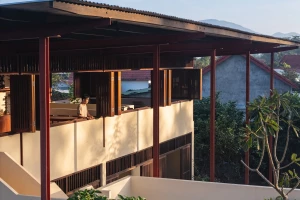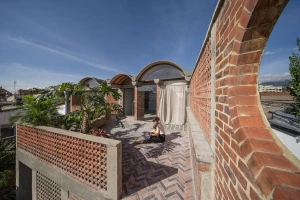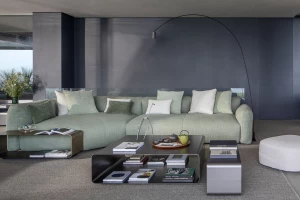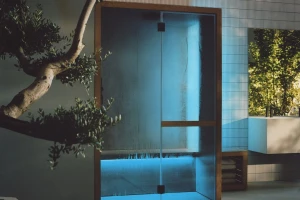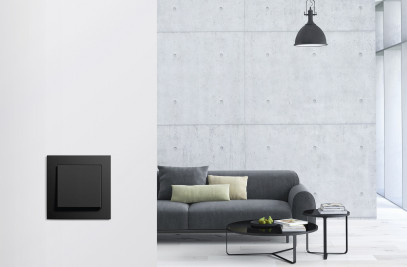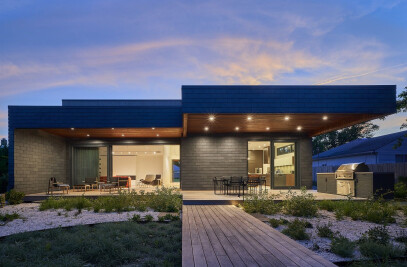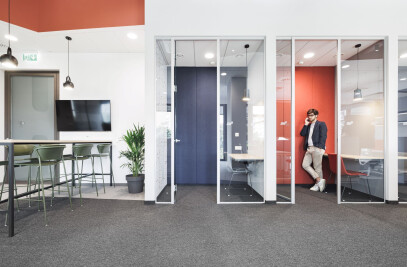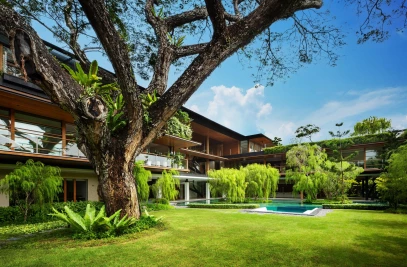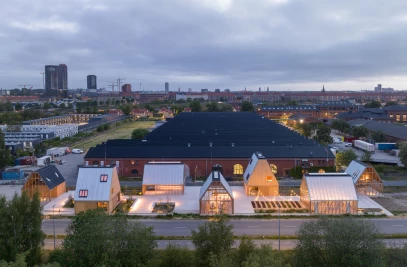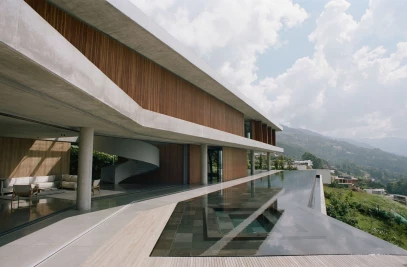Huerta de Rey is located in the Spanish province of Burgo, which is known for its small villages in the process of depopulation. This trend has given rise to vacation spots that, outside prime tourist times, take on a melancholic serenity. This house, designed by Mecanismo, address its context by integrating into the sleepy rural environment that surrounds it.

The site is located between two streets that bound it to the north and south. These two streets are situated at different heights with the north street three meters above the south street below.

The house is accessed along the northern streetside boundary. A buffer is created on this façade with the use of a hermetic ceramic block wall that isolates the house from the streetside condition and provides privacy with the wall opening slightly in the central part, giving rise to a double-height patio, which goes down to the lower level of the house.

The house is structured into two parts that are identifiable from the outside as they are resolved with different materials. The first part, which includes the large ceramic block wall to the north, contains bathrooms on the upper floors, and the living room, as well as kitchen, toilet and basement at garden level.

The second part is a suspended upper block volume made of concrete that extends to the south, forming the porch below. Within this volume, three bedrooms are contained.

The two components generate a clear division and expression of function, coinciding with the structure and materiality of the project.

Inside, rooms are arranged to optimize their functionality and are positioned within the house according to their degree of privacy. By prioritizing natural light, protecting interior spaces from direct incidence of the sun, controlling the building orientation and openings, as well as semi-entrenching the ground floor into the earth, the house has a natural thermal regulation.

The ceramic block provides a ventilated façade with texture and dynamism while crushed concrete in its most primitive state highlights the rough and irregular stony nature of the site. By contrast, interior finishes are warm and natural with an emphasis on oak wood panelling and flooring.













